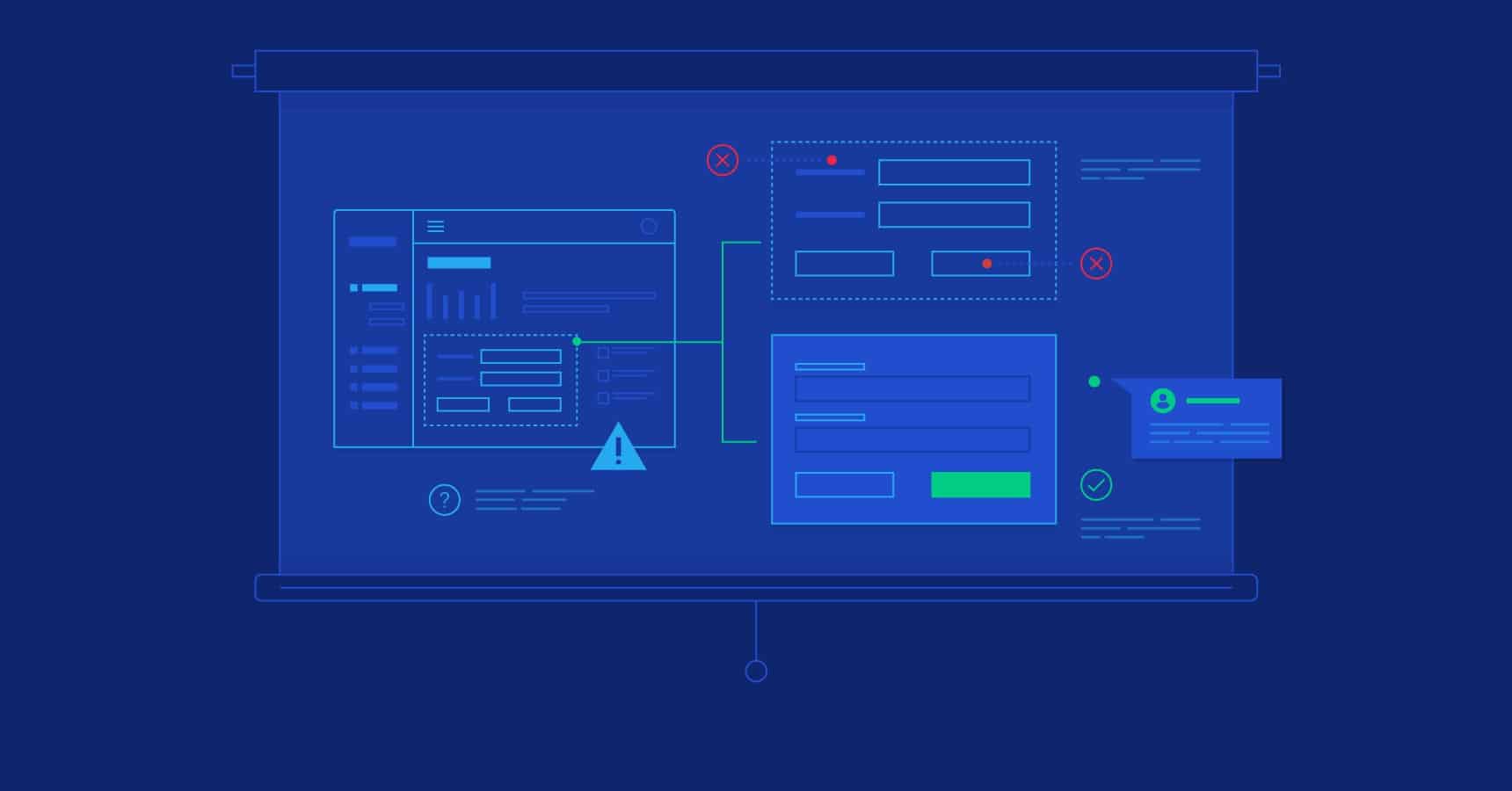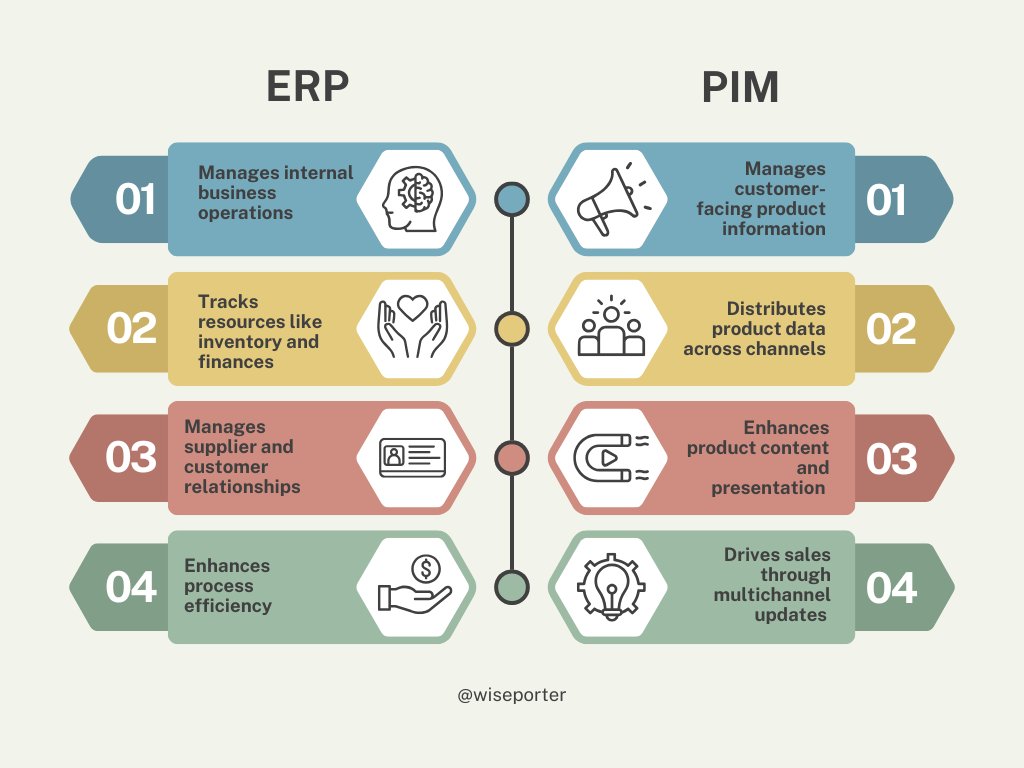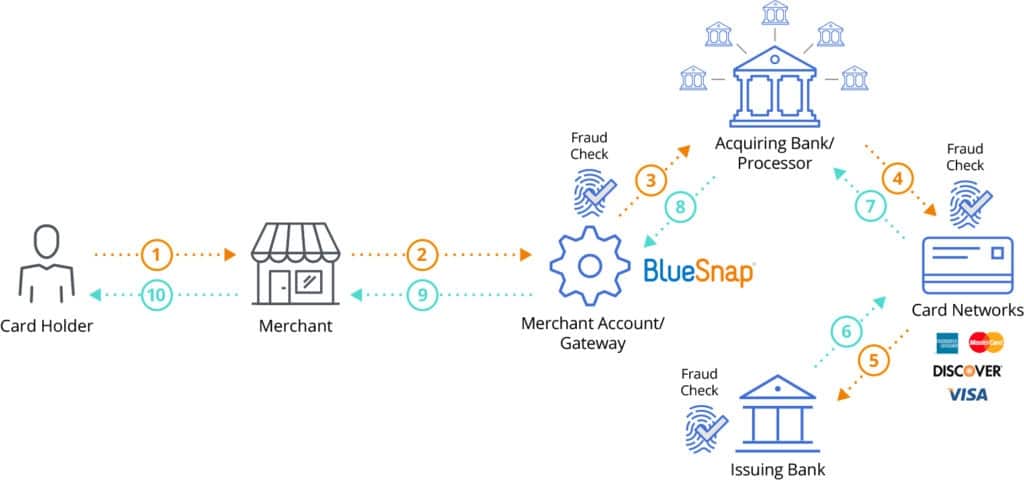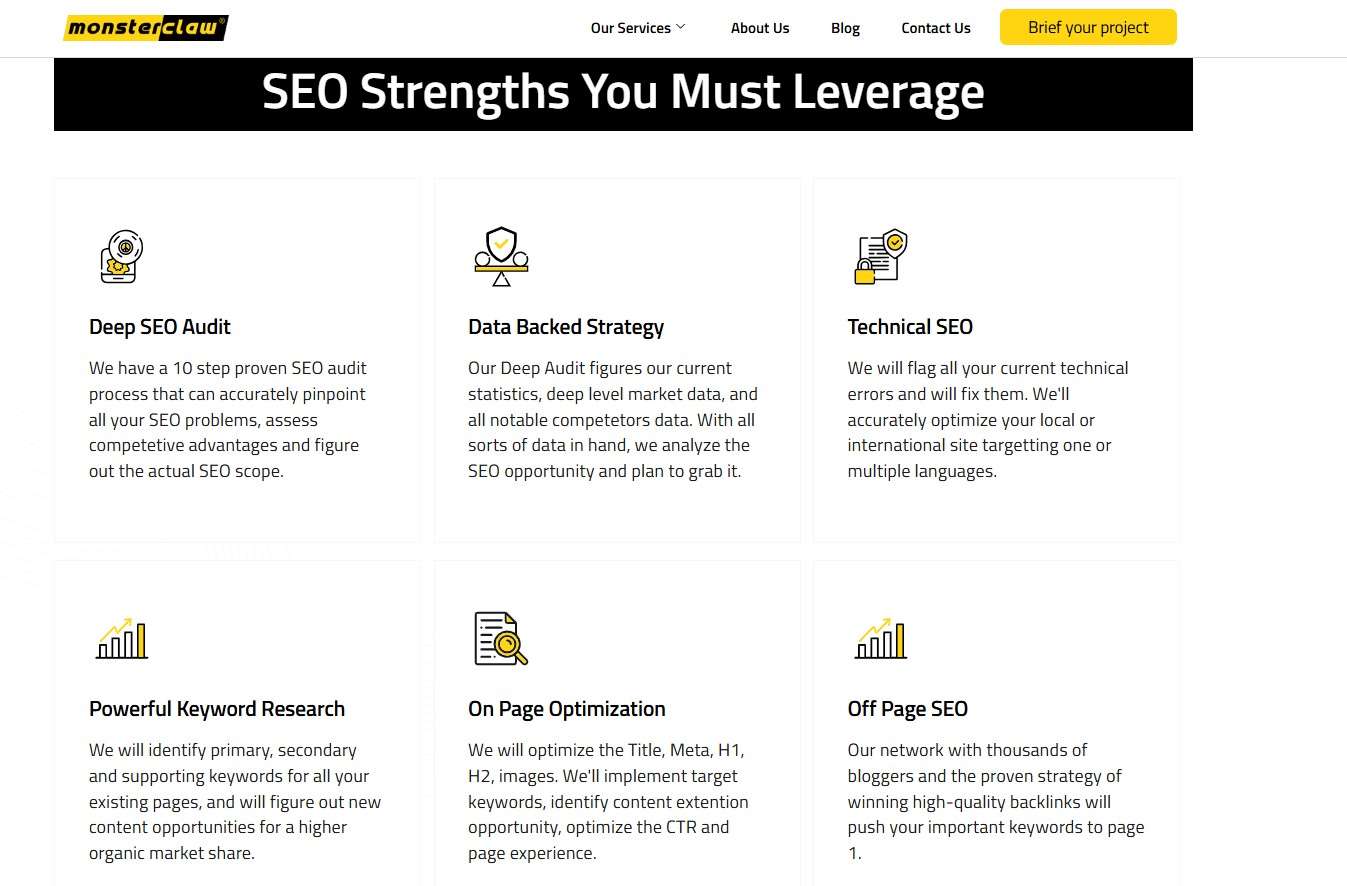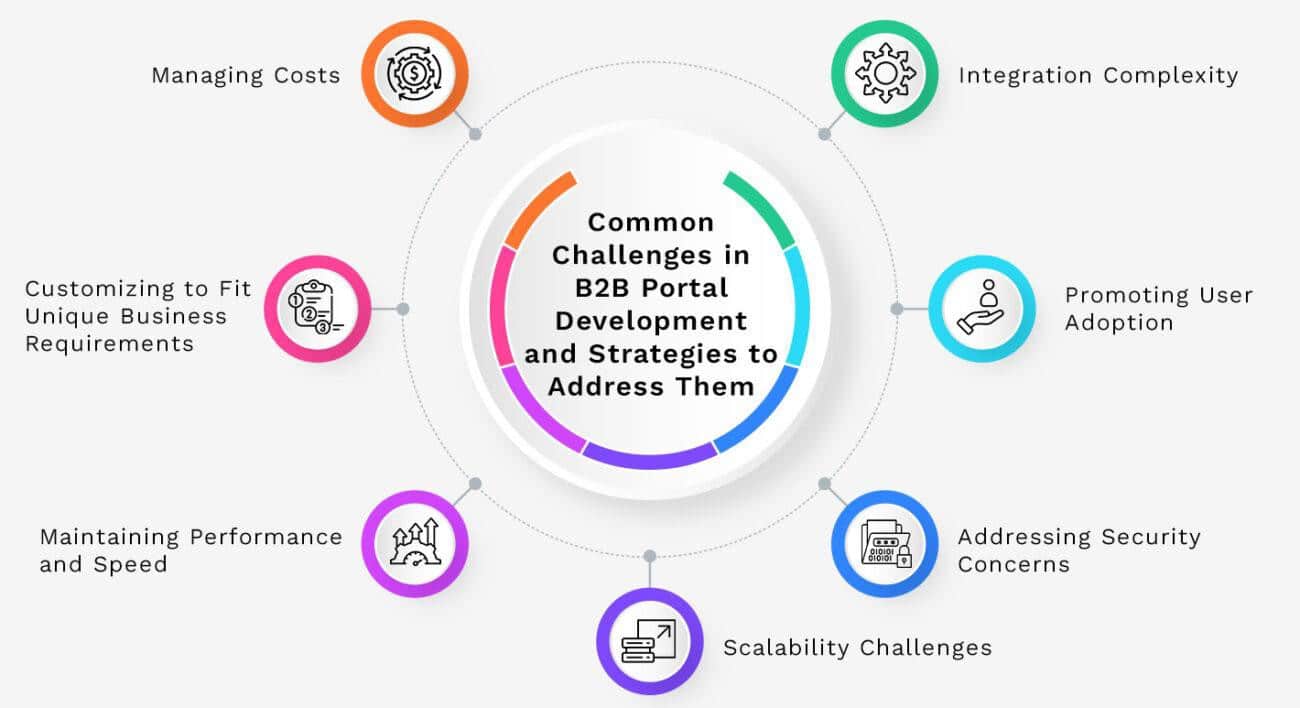B2B eCommerce isn’t about boring spreadsheets anymore! It’s where strategy meets scalability with a touch of sass!
Want your B2B sales to take off? You’ll need more than just a fancy logo and a PDF catalog! When it comes to B2B eCommerce, it’s not just about selling. It’s about scaling smart!
Let’s know about the top strategies for success from the tech stack to the search stack! And let’s help you to win Google and your buyers, one keyword at a time!
B2B E-commerce Development: At A Glance
| 1. Define Clear Business Goals |
| 2. Choose the Right E-commerce Platform |
| 3. Optimize User Experience (UX) for B2B Buyers |
| 4. Integrate with Existing Systems (ERP, CRM, PIM) |
| 5. Focus on Personalization and Customer Segmentation |
| 6. Implement Secure & Scalable Payment Solutions |
| 7. Streamline Logistics and Fulfillment |
| 8. Leverage Data & Analytics |
| 9. Prioritize SEO and Digital Marketing |
Understanding B2B Ecommerce
B2B E-commerce is a type of internet company in which companies offer goods or services to other companies. Usually, digital platforms are used for some kind of transitions, like,
- Handle orders
- Transactions
- Supply chain management
Before the digital revolution, businesses mostly sold services through catalog orders and in-person transactions. Corporate buyers today expect digital, easy-to-use, and straightforward buying experiences.
The study says,
In 2022, e-commerce websites accounted for over 10% of B2B product sales, or $1.676 trillion. This trend is predicted to continue until at least 2026.
Relatable Read: B2B Marketing Automation Guideline for Your Online Business
How B2B E-commerce Differs from B2C E-commerce
While both B2B and B2C e-commerce involve online transactions, there are notable differences between their target markets, transactional features, and sales processes.
| Aspects | B2B | B2C |
| Definition | Involves transactions between businesses | Involves transactions between businesses and customers |
| Sales cycle | Longer due to stakeholder buy-in and higher values | Typically shorter. Influenced by individual purchases |
| Marketing focus | Product specifications, ROI, and long-term relationships | Brand, emotional appeal, and convenience |
| Pricing | Often customized, negotiated | Standardized, fixed |
| Purchase volume | Larger bulk orders | Smaller, individual items |
| Examples | Software, raw materials, industrial equipment | Retail, clothing, entertainment |
Relatable Read: 9 MAJOR B2B CUSTOMER ACQUISITION STRATEGIES
Top Strategies for Successful B2B E-commerce Development
Let’s explore the top strategies for successful B2B E-commerce development!
1. Define Clear Business Goals
Clear, measurable goals that support overall business objectives are the cornerstone of every effective B2B e-commerce strategy. A few examples of these objectives are:
- Increasing revenue
- Growing the clientele
- Cutting expenses
Align E-commerce Development with Company Objectives
Clear business objectives that support the organization’s overall objectives should be outlined in the e-commerce strategy. This involves comprehending the overall goals of the business. And then establishing targeted e-commerce targets to help achieve them.
KPIs to Track
Some common B2B e-Commerce KPIs include:
- Website performance KPIs
- Customer acquisition and retention KPIs
- Customer behavior insights
- Sales and lead generation
2. Choose the Right E-commerce Platform
The development and scalability of your company depend on your choice of B2B e-commerce platform. The preferred platform needs to be dependable, flexible, and capable of handling intricate business-to-business exchanges.
Scalability
A scalable e-commerce platform can handle increased orders, traffic, and product lines. That too, without causing performance problems. It should encourage business growth. Such as selling models or breaking into new markets. Scalability depends on reliable infrastructure and cloud-based solutions.
Integration
The platform should easily interface with current systems like as ERP, CRM, and PIM. Wondering why? To guarantee effective data flow and optimized processes.
Customization
It is essential to be able to modify the platform’s appearance, feel, and functionality to fit
- Certain business needs
- Brand identities
However, too much personalization can lengthen project schedules and raise costs.
Relatable Read: Killer SEO Strategies for E-commerce Sites
3. Optimize User Experience (UX) for B2B Buyers
To attract and retain customers, a successful e-commerce website needs to enhance the user experience for business-to-business (B2B) buyers. B2B buyers expect a seamless, personalized, and productive buying experience, just like B2C buyers do.
[Source: Toptal]
Intuitive Navigation
For B2B e-commerce platforms, sensible product categorization and easy-to-use navigation are crucial. Conversion rates may increase when customers can find products more quickly. Thanks to efficient navigation. Strong search features also play a great role.
Personalized Pricing
For B2B e-commerce, it is essential to provide customized pricing depending on client groups or individual agreements. A few examples are custom price lists, tiered pricing, and dynamic pricing.
Bulk Ordering
As B2B transactions sometimes entail higher order volumes, B2B e-commerce platforms ought to have bulk ordering features. The ordering process for many goods should be made simpler by the user interface.
Mobile Optimization and Speed
Optimizing the website for mobile is essential as a large percentage of B2B buyers use mobile devices for work. A mobile-first design can increase sales and loyalty while improving the user experience. Another important factor is site performance.
Quicker load times increase conversion rates and search engine rankings. Using a content delivery network (CDN), turning on caching, and optimizing images are some ways to increase speed.
Relatable Read: Why is Website Speed Optimization Important for Your Business?
4. Integrate with Existing Systems (ERP, CRM, PIM)
For operational effectiveness and data quality, B2B e-commerce platforms must seamlessly integrate with current corporate systems like ERP, CRM, and PIM. A single source of truth is made possible by this interconnection. It also removes manual procedures and data silos.
Benefits of Seamless Backend Integration
The benefits are:
- Real-time data and accuracy
- Improved customer experience
- Increased efficiency and reduced costs
Reducing Manual Processes
Automating repetitive operations creates streamlined, effective workflows. This not only lessens human mistakes but also frees up workers to concentrate on more worthwhile and sophisticated duties. Using workflow automation and integrating key systems are important strategies to achieve this.
5. Focus on Personalization and Customer Segmentation
Personalization is a crucial differentiator in B2B e-commerce. As it improves the consumer experience, and can result in higher income.
B2B buyers expect a smooth and personalized experience that is influenced by B2C experiences.
Custom Catalogs
Businesses can apply unique pricing based on client profiles or groups, display relevant products, and alter product views with personalized catalogs. This helps in controlling product pricing and availability. Particularly for business-to-business clients.
Pricing Tiers
Tiered pricing strategies offer different price levels for the same product based on factors like purchase volume, company size, industry, or loyalty. This
- Incentivizes larger purchases
- Rewards customer loyalty
Purchase Workflows
Purchase workflows are also personalized. They guarantee that the purchasing procedure is customized to meet the demands of individual customers. Workflows for approval and various user roles are examples of this.
Data-driven Personalization
Effective personalization in B2B e-commerce requires the use of data and AI.
6. Implement Secure & Scalable Payment Solutions
To satisfy the various demands of business purchasers, B2B e-commerce necessitates scalable, safe payment systems. They provide automation and flexibility. Providing a variety of payment methods can boost conversions and reach a larger audience.
Net Terms
These deferred payment contracts are sometimes written as “net 30,” “net 60,” or “net 90” days. They let clients pay for goods or services after a predetermined amount of time. This gives customers freedom while guaranteeing merchants receive their money on schedule.
ACH (Automated Clearing House)
Direct payments from bank accounts are possible via ACH transfers. It’s an affordable electronic payment option. B2B ACH transactions are becoming more common and have advantages over credit cards. Such as quicker delivery than cheques and cheaper processing costs.
Credit Lines and Invoicing
Invoice factoring and credit lines are examples of B2B finance possibilities. Invoicing enables businesses to postpone payment, frequently with net terms.
B2B Payment Gateways and Automation
Payment gateways make secure internet purchases possible. B2B payment automation leverages technology and software to expedite the entire payment process. This ranges from invoicing and payment monitoring to reconciliation.
This automation
- Lessens friction in the payment process
- Enhances cash flow
- Decreases manual labor
7. Streamline Logistics and Fulfillment
Simplifying fulfillment and logistics in business-to-business e-commerce is crucial for
- Cutting expenses
- Raising competitiveness
- Boosting customer satisfaction
Real-time Inventory
Stock levels are continuously monitored and updated across several locations with real-time inventory management. This minimizes expenses, avoids stockouts, and overstocking. This also guarantees correct stock visibility.
Shipping Integrations
Order fulfillment is made easier by integrating the e-commerce platform with shipping software and carriers. This automation improves the checkout process by
- Generating labels
- Monitoring updates
- Getting real-time freight rates
Among the major B2B shipping providers are UPS, FedEx, DHL, and USPS.
Automation
A few of the processes that automated fulfillment uses technology to expedite are
- Order processing
- Inventory management
- Picking and packaging
- Returns management
As a result, this minimizes errors, cuts down on manual effort, and shortens delivery windows.
8. Leverage Data & Analytics
For B2B e-commerce to succeed, companies must use data and analytics to better understand customer behavior, streamline processes, and make wise decisions.
Tools to Track User Behavior
These tools show clicks, scrolls, and navigation paths made by users when they engage with a website or application. The tools are:
- Traditional analytics
- Session Replay
- Heatmap
- Feedback and voice of the customer
Tools to Track Conversion Rates’
The tools to track conversion rates are
- Google analytics
- A/B testing tools like Optimizely and Omnicovert
9. Prioritize SEO and Digital Marketing
[Source: MonsterClaw LLC]
For B2B e-commerce to succeed, SEO and digital marketing must be prioritized to raise
- Brand awareness
- Attract traffic
- Produce leads and sales
B2B SEO Best Practices
Technical SEO: Optimizing website structure, content, and metadata to rank higher in search engine results pages (SERPs) is crucial. This includes technical audits to ensure discoverability.
Check out:
Professional Search Engine Optimization (SEO) Services
Content Strategies: Creating high-quality, informative content (blogs, whitepapers, case studies, videos, infographics)
- Establishes thought leadership
- Attracts potential customers
Check out:
Backlinks: A crucial SEO component is constructing high-quality backlinks from other trustworthy websites. They tell search engines about your authority and authenticity. Some strategies are:
- Guest blogging
- Broken link building
- Unlinked brand mentions
- Original research and data-driven content
- Leveraging partnerships and integrations
- Digital PR
- Speaking of conferences/podcasts
Email Marketing
Email marketing is an inexpensive, low-effort technique for boosting
- Sales
- Brand exposure
- Lead nurturing
Personalization, segmentation, mobile friendliness, and attention-grabbing subject lines are all effective tactics. Trend reports and other instructional materials might also be useful.
Relatable Read: 5 Top Email Marketing Services in 2025
PPC (Pay-per-click) Advertising
Targeted advertising is used in B2B PPC campaigns to reach a certain market. Thorough keyword research, audience targeting and retargeting, effective ad copy, and A/B testing are important tactics.
Common Challenges in B2B E-commerce Development
[Source: Kohezion]
B2B e-commerce development must overcome some of the obstacles, like:
- The complexity of B2B operations
- Internal opposition to digital transformation
- The requirement for specialized pricing and approval procedures
Businesses must overcome these obstacles if they want to thrive in the rapidly changing digital market.
Resistance to Digital Transformation
Internal Adoption Problems: One major obstacle is the resistance of B2B organizations. Especially sales teams in implementing new procedures and digital technologies. This may be due to a general comfort level with traditional sales techniques or a fear that digital technologies would replace their roles.
Skill Gaps and Outdated Systems
Many business-to-business (B2B) companies use outdated systems that are challenging to integrate with modern e-commerce platforms. Furthermore, there is frequently a lack of qualified staff. That too, with the know-how required to successfully manage and carry out digital transformation projects.
Future Trends in B2B E-commerce
Due to shifting consumer expectations and technology breakthroughs, the B2B e-commerce market is changing quickly. Some of the major developments are:
- The broad use of AI and machine learning
- The rise of voice commerce and AR/VR experiences
- The expanding acceptance of subscription models
Let’s Get Started With MonsterClaw!
And there you have it! The secret sauce to B2B e-commerce success isn’t magic. It’s a strategy! So, let MonsterClaw help you conquer the B2B jungle!
With battle-tested strategies, they turn clicks into clients and browsers into buyers. So, partner with MonsterClaw and build a B2B empire that sells itself!
FAQs: B2B Ecommerce Development
What is B2B in e-commerce?
Online sales of goods or services between companies are referred to as business-to-business (B2B) electronic commerce.
How to build a B2B e-commerce platform?
Developing a B2B e-commerce platform requires a strategic approach that emphasizes user-friendliness, technology selection, and business needs.
How to generate B2B sales?
Focus on determining your target client profile, cultivating trusting connections, and reaching out to potential customers using a variety of sales and marketing techniques to produce B2B sales.
What is the best B2B eCommerce platform?
Although a company’s unique requirements and goals will determine which B2B eCommerce platform is ideal, Shopify Plus, BigCommerce, Adobe Commerce (previously Magento), and Salesforce Commerce Cloud are some of the leading options.
What is the highest-paid ecommerce niche?
In 2025, pet supplies, home workout gear, health and wellness, and beauty and skincare will be the most lucrative e-commerce sectors.

